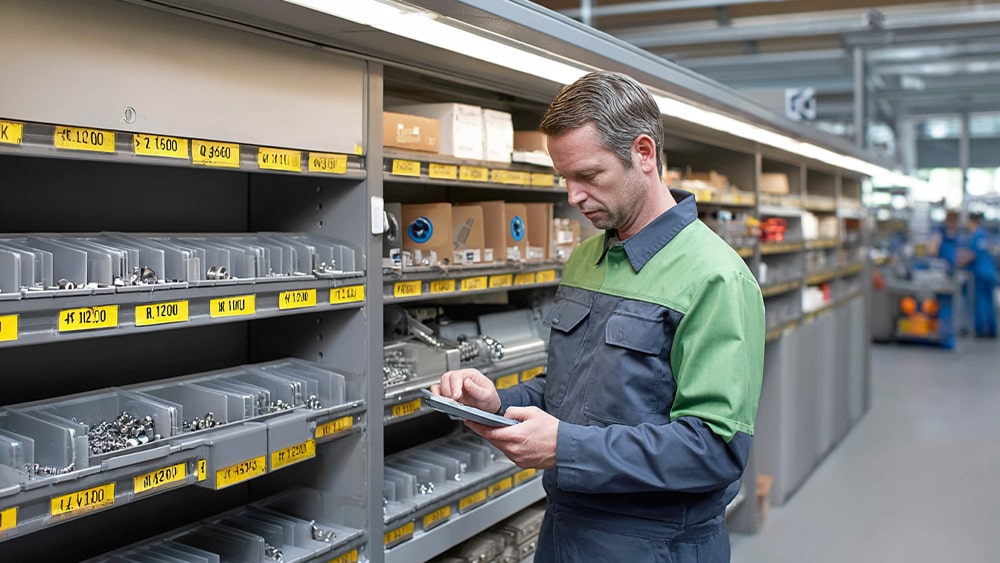Purchasing in 2030 will be digital, sustainable, and connected. AI, big data and automation optimize processes, while sustainability and agility are becoming more important. Successful buyers need technological and strategic expertise to master change.
The future of purchasing: digital procurement in 2030: future of purchasing
The rapid development of economy and technology forces companies to continuously innovate their purchasing processes. For 2030, there are already concrete forecasts for the future picture of shopping. These predictions paint a picture of a purchase that more innovative, sustainable, transparent, digital and connected It will be as it is today.
What will purchasing look like in 2030?
Purchasing includes Procurement of products and services for companies. Technological developments and annually changing markets and supply chains are driving Transforming purchasing ahead. These continuous changes require companies to constantly adjusting their purchasing strategies to remain competitive and meet the growing demands of digital transformation.
Which trends are shaping the future of purchasing?
Purchasing is currently carried out by several key trends that significantly influence the purchasing of the future:
- Digitalization and automation: AI, big data and IoT are revolutionizing purchasing processes. Autonomous systems take on operational tasks, while purchasing managers concentrate on strategic areas of activity.
- Sustainability and social responsibility: Companies integrate ecological and social aspects into their procurement strategies to reduce environmental impact and actively assume responsibility.
- Technology in focus: Creative technologies such as blockchain and advanced analytics authorize improved transparency and more efficient sourcing processes.
- Agility and resilience: Purchasing departments must become more flexible and resilient in order to react quickly to disruptions and proactively manage risks.
- Cost management and value creation: Purchasing is becoming a strategic value-added partner that drives innovations and contributes to the overall success of a company.
- Personalization and employee development: The role of the buyer is changing to “Interface manager”, which requires new skills and continuous training.
- Globalization vs. regionalization: Companies balance between global and local procurement strategies to minimize risks and promote sustainability within the company.
- Customer focus and internal collaboration: Purchasing is geared more towards internal stakeholders and end customers, with cross-departmental cooperation becoming decisive.
What are the most important technologies for purchasing in the future?
Die main technologies The purchasing of the future is:
- Artificial intelligence (AI): Realizes data-driven decisions, digitizes complex analyses and optimizes predictions.
- Big data analytics: Creates more transparency in global procurement markets and supports employees in strategic decision-making processes.
- Internet of Things (IoT): Connect devices and allow autonomous orders.
- Robotic Process Automation (RPA): Automates repetitive tasks such as orders, supplier checks, and contract monitoring.
- Blockchain: Increases visibility and security in supply chain management
- Augmented (AR) and virtual reality (VR): Create new opportunities for product presentations and virtual shopping experiences.
- Cloud computing: Enables flexible, scalable IT infrastructures for procurement solutions.

How does artificial intelligence influence purchasing?
Artificial intelligence enriches purchasing through automation, efficiency improvement and strategic decision support. AI systems analyse large amounts of data (big data) in real time, optimize procurement processes and provide precise forecasts for demand and market trends. Advanced applications also include holistic sustainability assessments and proactive supply chain risk management.
Purchasing departments use AI in purchasing to automate routine tasks such as auditing and order management, which allows department employees to concentrate extensively on strategic tasks. Such technologies increase productivity, reduce sources of error and generate significant cost savings for companies.
What are the challenges of digitization in purchasing?
Die Digitalization in Procurement brings with it numerous challenges that companies will have to overcome in the coming years. The central tasks include managing the Pressure to innovate, the effective use of growing amounts of data and the reorganization of supplier relationships.
Companies are faced with the task of Modernize IT systems to optimize procurement processes and procurement solutions to implement. At the same time, they must manage Managing costs and risks in an increasingly complex and volatile procurement environment. Solutions include the use of AI-based analysis tools for data evaluation, the development of agile purchasing strategies, and investing in employee training to promote digital skills.
How can buyers prepare for the future?
In the digital age, the proactive preparation One for upcoming changes for companies competitive advantage. Buyers are faced with the task of Identify and evaluate technological trends at an early stage. This requires continuous training and the development of digital skills. Agile working methods make it possible to react flexibly and smartly to market changes. Building networks with innovators and start-ups opens up new Perspectives and solutions. Pilot projects to test new technologies provide practical experience and minimize risks during implementation. Companies that consistently implement these steps position themselves as pioneers in the industry and avoid losing touch with innovations.
What knowledge is important for buyers in 2030?
Successful buyers have, 2030 entrepreneurial knowledge to increase overall success in your own company. They bring a Know-how in the following areas with:
- Data analysis capabilities
- strategic thinking
- Negotiation skills
- technological understanding
- Innovation management
- Sustainability awareness
- intercultural competence
- Change Management expertise
synopsis
Procurement 2030 is characterized by Digitalization, sustainability and strategic partnerships off. AI and advanced analytics drive innovation. Purchasing managers of the future must be technologically savvy, strategically thinking and adaptable in order to be in the business sector of changing Procurement to operate successfully and make optimal use of potential. In this way, companies are always prepared for current challenges, which ultimately affect more than just purchasing.
Frequently asked questions
How can the networking of suppliers and buyers be improved?
Collaboration platforms and blockchain technology enable transparent, real-time exchange of information and improve supplier relationships.
How can digital procurement work operationally and strategically at the same time?
While automation takes on operational tasks, AI-based analytics support strategic decision-making.
What role does transparency play in digital procurement?
Transparency plays an important role because it promotes trust, optimizes processes and makes data-based decisions in real time.
What new business models are emerging as a result of digitization?
Platform economies, as-a-service models and data-driven services are revolutionizing the procurement landscape.
How does simple system help with the new role of purchasing?
simple system provides intuitive e-procurement solutions that increase process efficiency and support strategic purchasing decisions.

Einkaufen & sparen
Erfahren Sie, wie es geht, in unserem kostenlosen E-Procurement-Report. Jetzt kostenlos und unverbindlich herunterladen.
Jetzt lesen








